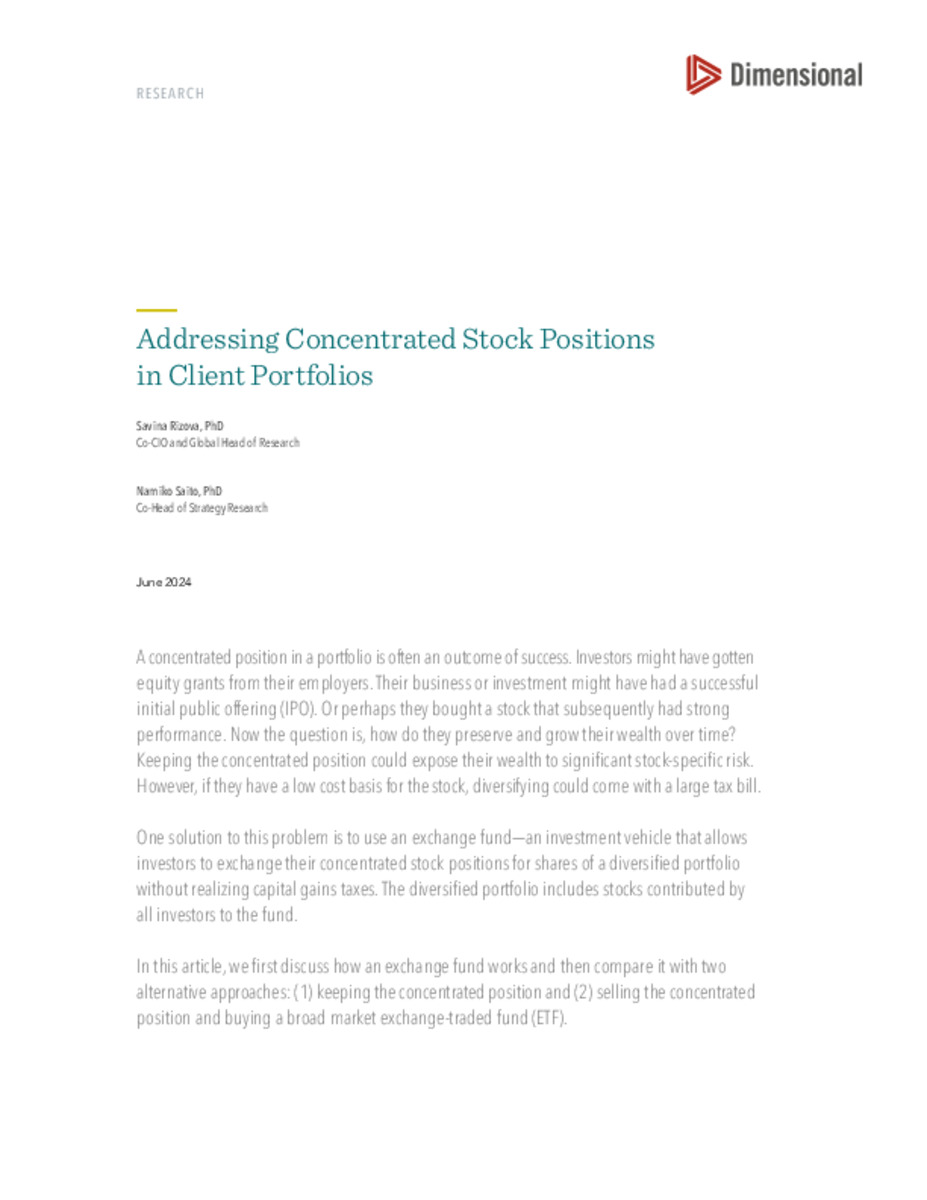Addressing Concentrated Stock Positions in Client Portfolios
A concentrated position in a portfolio is often an outcome of success. Investors might have gotten equity grants from their employers. Their business or investment might have had a successful initial public offering (IPO). Or perhaps they bought a stock that subsequently had strong performance. Now the question is, how do they preserve and grow their wealth over time? Keeping the concentrated position could expose their wealth to significant stock-specific risk. However, if they have a low cost basis for the stock, diversifying could come with a large tax bill.
One solution to this problem is to use an exchange fund—an investment vehicle that allows investors to exchange their concentrated stock positions for shares of a diversified portfolio without realizing capital gains taxes. The diversified portfolio includes stocks contributed by all investors to the fund.
In this article, we first discuss how an exchange fund works and then compare it with two alternative approaches: (1) keeping the concentrated position and (2) selling the concentrated position and buying a broad market exchange-traded fund (ETF).
